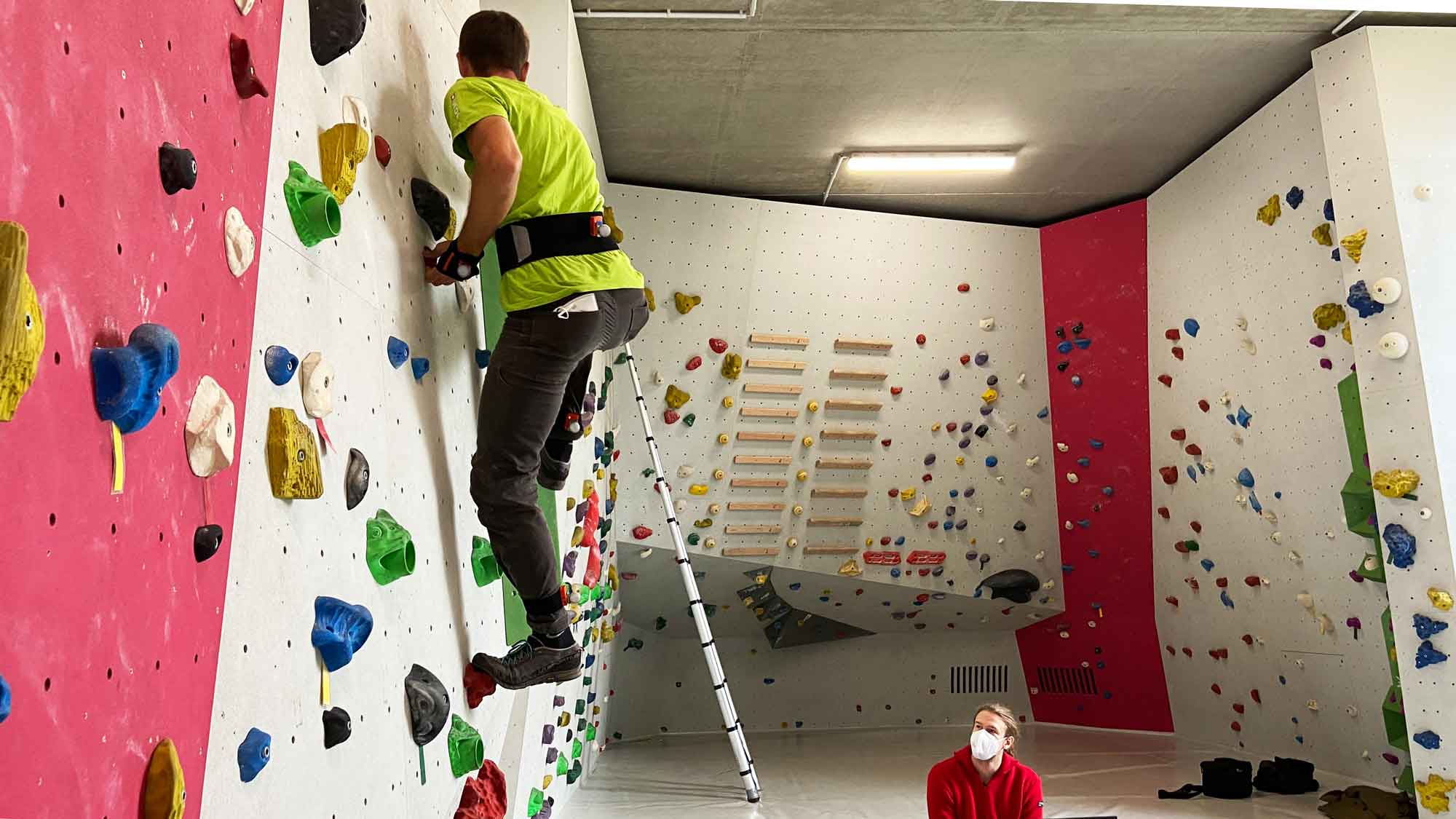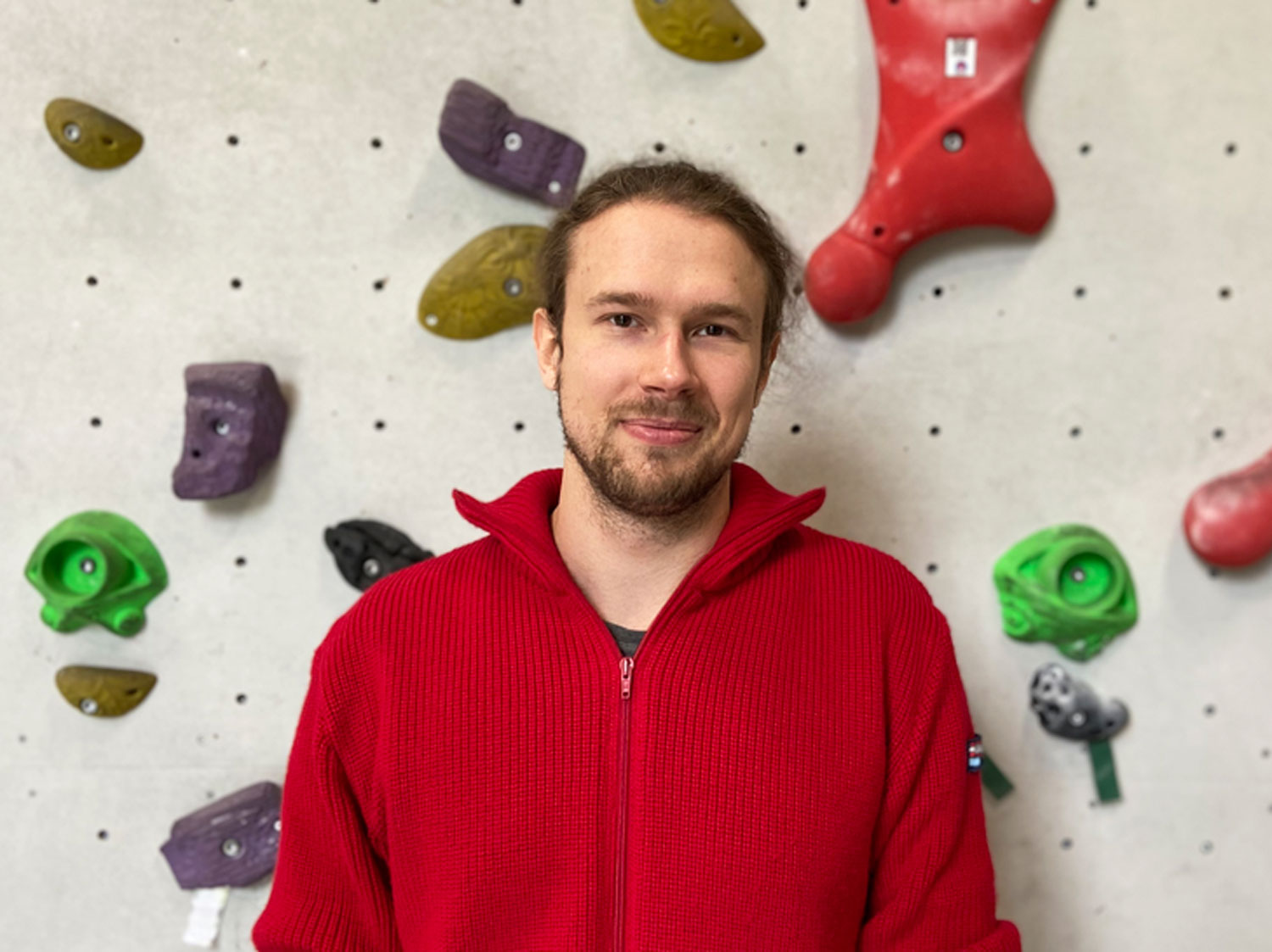
© Universität Bremen
Climbing with Sensors
Every smartphone is packed full with sensors. The computer scientist Tom Koller is investigating their potential for bouldering.
Smartphones can navigate through buildings, individual floors, and even rooms and sports watches provide assessments of which movements in your training plan show room for improvement. In order to make sure that this is no longer a thing of the future soon, Tom Koller and his colleagues from the Multi-Sensor Interactive Systems Group are carrying out research in the “State Estimation Solely Based on Inertial Sensors and Prior Knowledge” (ZaVI) project at the University of Bremen. The research assistant is working on the matter of whether so-called inertial sensors, thus, sensors that record movement, can provide a correction position definition with the help of previous knowledge. If and how this could work is what he is currently testing in bouldering - a form of climbing at low heights without any rope.
Jonas Loss climbs from one red hold to the next on the wall. And then back down again. The head of the DAV Bremen Climbing Center is not just bouldering for fun today but rather for science. The computer scientist Tom Koller has set up his experiment in the climbing gym. An infrared camera and a video camera observe Loss whilst he is climbing up the gray wall with the colorful holds. Additionally, Loss is wearing orange squares with gray spheres attached on his hands and ankles, as well as on his back. Those are the inertial sensors that log his movements, to which reflectors are fixed and are recorded by the infrared cameras. The images and sensor data that Koller needs for his research are fed into a laptop.
© Universität Bremen
Diverse Application
“With the data, I am trying to find out for which movements inertial sensors can even be used. I am currently observing it based on bouldering,” states Koller and explains his research. With around 20 participants, who have various skill levels in climbing, Koller records location data from different climbing routes. “To date, there is no proven method for inertial sensors to determine exact locations, only the theory. Said theory is to be confirmed and substantiated - or even disproved,” explains the research assistant. The sensors are comparably cost effective and can therefore be applied in diverse manners. Exact performance measurements in sports, indoor navigation without GPS, or automatic lighting without movement detectors - these could be possible fields of application.

© Universität Bremen
Prior Knowledge Required
An inertial sensor is made up of an acceleration sensor and a rotating sensor. Smartphones already have these. Thus, this requirement for broad application is already fulfilled. However, why is it still so difficult to use inertial sensors for daily tasks? An inertial sensor alone is not enough explains the scientific assistant: “In order to determine the exact locations, orientation and speed are calculated. The longer one measures said data, the more imprecise it becomes. This leads to the sensor measuring impossible values. That is a how a so-called sensory error of judgment occurs. In the case of bouldering, a sensory error of judgment would look like someone grasping through the wall and not grasping a hold.
The ZaVI project therefore focuses on finding out whether it is possible to give the inertial sensor enough knowledge so that such sensory errors of judgment can be reduced. This is called prior knowledge. The number of movement options is great and depends on what application field one observes. “When using the example of climbing, we can feed the inertial sensors with the prior knowledge that a person climbs up a wall when bouldering and uses holds,” explains Koller. It is also about how exact the result must be. “Put simply: Is it enough to follow the hand positions to 10cm or does it need to be to the exact centimeter?”
© Universität Bremen
Two years ago, Koller tried out measurements with the sensors in the field of professional track cycling. “One trainer was particularly interested in whether this type of measurement works. Every movement counts - especially in professional sports.” With the data, curve manoeuvres or technique could be optimized in track cycling, for example.
A specific sports watch app for bouldering will not be created at the end. But maybe the path to such an app is prepared, states Koller. “The aim of the research is to determine basic results, on which future theories, methods, and applications fields can build.”
Further Information
In the “State Estimation Solely Based on Inertial Sensors and Prior Knowledge” (ZaVI) project of the Multi-Sensor Interactive Systems Group, Prof. Dr. Udo Frese, Dr. Tim Laue, and Tom Koller are investigating whether prior knowledge suffices in inertial sensors for exact location determination when bouldering.
Further information on the DAV Bremen Climbing Center.